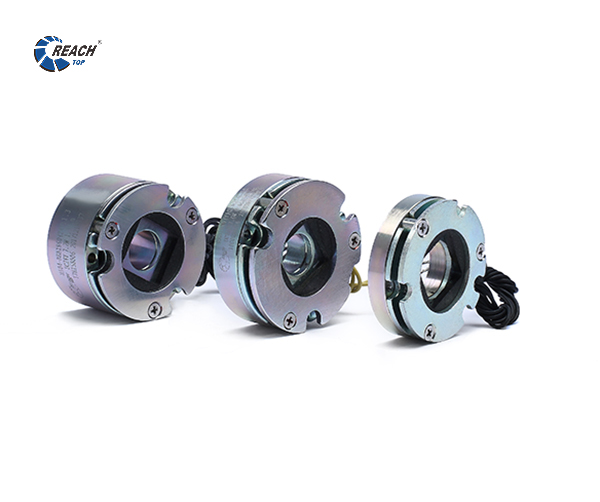Introduction:
Working Principle of Permanent Magnet Brakes The rotor of the permanent magnet brake is mounted on the shaft of a servo motor through a rotor sleeve. The rotor aluminum plate accommodates an armature, and the armature is assembled with the aluminum plate through processes like riveting, with springs sandwiched between them. Inside the stator housing, there is a high-temperature-resistant rare-earth permanent magnet, an insulating framework, and copper wires wound around the framework.When DC power is applied to the stator winding, a magnetic field is generated, and the polarity of this field opposes that of the permanent magnet’s field. As a result, the magnetic paths cancel out, causing the release of the rotor armature, allowing it to rotate freely. When power is cut off from the stator coil, only the permanent magnet in the stator forms a single magnetic path. The armature on the rotor is attracted, and the frictional contact between the rotor and stator generates a holding torque.
Working Principle of Spring-Applied Electromagnetic Brakes
The Spring- Applied electromagnetic safety brake is a single-piece brake with two friction surfaces. The shaft passes through a key and connects to the rotor assembly. When power is cut off from the stator, the force produced by the spring acts on the armature, tightly clamping the rotating friction components between the armature and the mounting surface, creating a braking torque. When it is necessary to release the brake, the stator is energized, creating a magnetic field that attracts the armature towards the stator. As the armature moves, it compresses the spring, releasing the friction disc assembly, thereby releasing the brake.
Post time: Jan-26-2024

